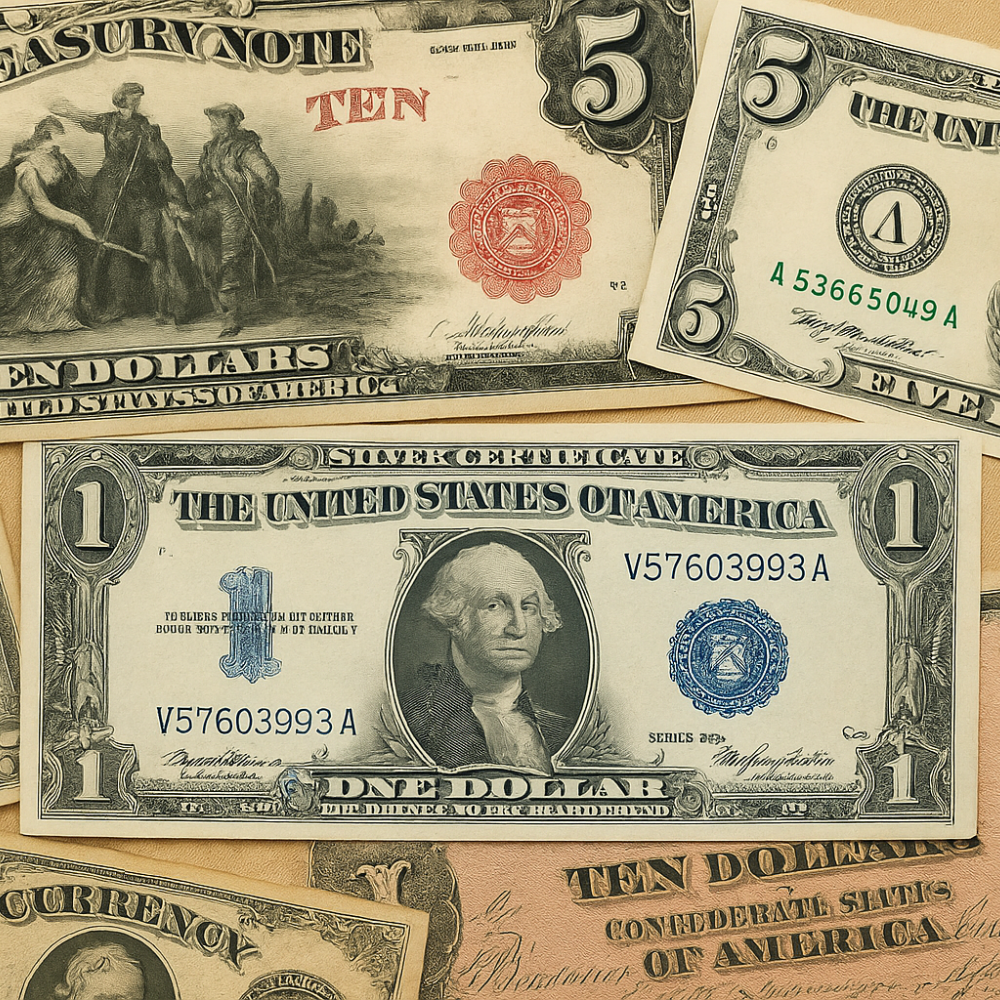A Legacy of American History in Your Hands
U.S. banknotes are more than just currency — they are windows into the nation’s history, artistry, and economy. Each note tells a story, from fragile pieces of Colonial paper money issued before independence to the modern Federal Reserve Notes we use today. For collectors worldwide, U.S. banknotes are among the most fascinating and desirable areas of numismatics. Through our Banknotes Collection, we bring this history to life with expert insights, carefully curated graded notes, and resources designed for both seasoned collectors and newcomers.
Why Collect U.S. Paper Money?
The appeal of U.S. banknotes lies in their artistry, scarcity, and direct ties to American history. Rare large-size notes such as the iconic Educational Series of 1896, Civil War fractional currency, and historic gold and silver certificates remain highlights of collections worldwide. Even modern small-size notes carry collectible value through their star notes, unique serial numbers, and historical series changes.
The Structure of U.S. Banknotes
Collectors typically explore U.S. paper money through categories that reflect the nation’s economic development. The definitive reference, Paper Money of the United States (23rd Edition) by Arthur L. and Ira S. Friedberg, presents these categories in a structured sequence. At Parthava Coin, we have chosen to follow the same order, guiding our readers and collectors through each chapter of America’s paper money story in a clear, organized way:
- Colonial and Continental Currency – the earliest notes issued by colonies and the Continental Congress.
- Treasury Notes (1812–1860) – wartime and early financial issues that shaped America’s fiscal foundation.
- Large Size Notes – the grand “horse blanket” notes, including Legal Tender, Silver and Gold Certificates, National Bank Notes, and Federal Reserve issues before 1928.
- Fractional Currency – small-denomination notes used during coin shortages in the Civil War era.
- Small Size Notes – the modern standard, introduced in 1928, covering Legal Tender, Silver Certificates, Federal Reserve Notes, Gold Certificates, and World War II emergency issues.
- Encased Postage Stamps – unique substitutes for coinage during periods of scarcity.
- Postage Envelopes – another creative form of emergency currency.
- Postal Notes – used to transmit small sums securely through the postal system.
- Confederate Notes – issued during the Civil War, deeply tied to American history and conflict.
- Paper Money Errors – misprints and anomalies highly prized by collectors.
- Supplements and References – including lists of National Banks, signature guides, and rarity information.
Parthava Coin: Your Trusted Source
At Parthava Coin, we specialize not only in collectible coins but also in carefully selected graded U.S. banknotes. Our inventory highlights the rich diversity of American paper money, with a focus on sought-after large-size notes, fractional currency, and modern Federal Reserve issues. While our educational series explores the full history of U.S. banknotes, our shop features the categories most relevant and available to today’s collectors.
✨ This is only the beginning of our journey through U.S. banknotes. Stay with us at Parthava Coin as we continue this story, exploring each part in detail — from Colonial beginnings to modern-day treasures.


Share:
East Asia Is Buying More Gold & Silver Collectible Coins
Colonial and Continental Currency (Part 1)